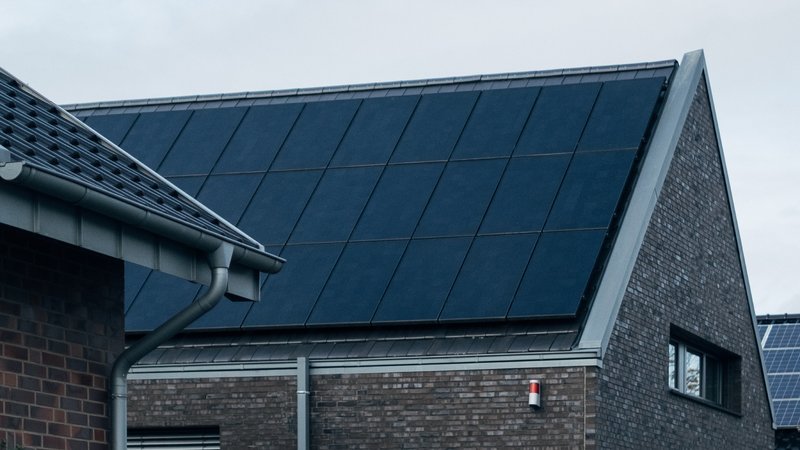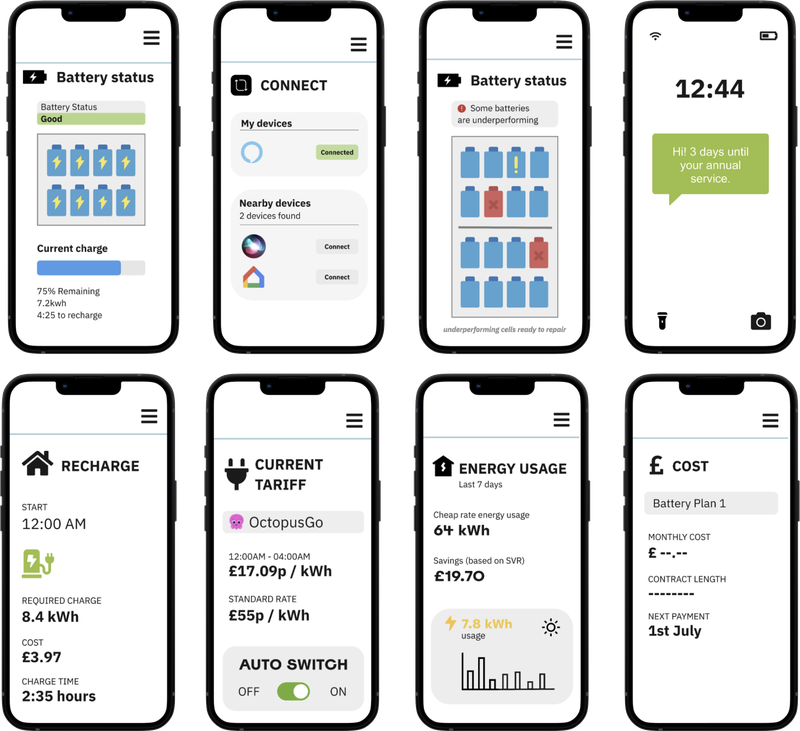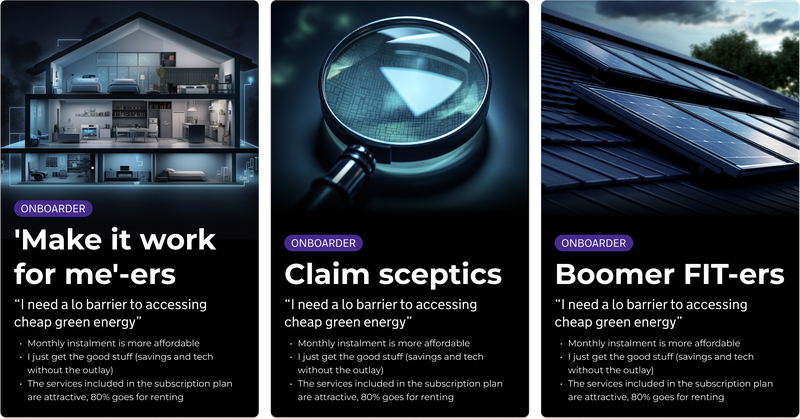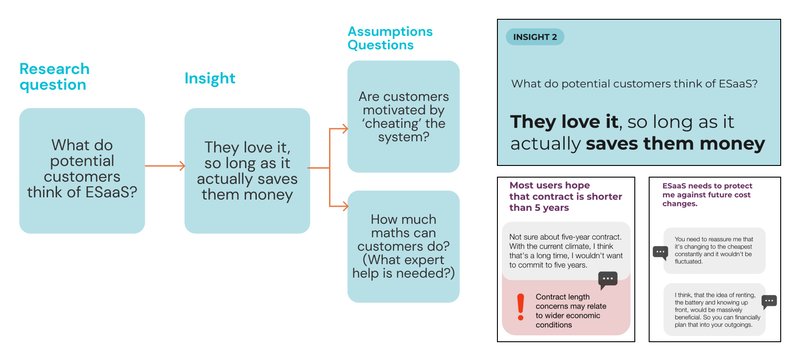My project was cancelled but I’m happy about it. This is why…
Solar panels, smart metres, battery storage, renewable products, and so on, these are some of the things I got to learn about while working on the project for an energy storage client.
The context of the project can be far outside your knowledge sometimes. Being a designer, the upside of working on a topic you are unfamiliar with is asking questions and learning new things in depth, but I was surprised at how little I know about these subjects. It’s important to understand energy consumption which is beneficial in many ways like being in control of your electricity bills and carbon footprint.

What is the project about?
We often work with public sector clients, but this time we got the opportunity to work with a clean technology company whose main product is sustainable lithium batteries. They are motivated to increase access to energy storage among households, and the brief was a discovery project to investigate how battery storage 'as-a-service' could be a viable product in the UK residential market. One restriction we needed to keep in mind is that the project was funded by the government so some deliverables were required to tick all their boxes.
What we did
While working on a renewable technology project was a new challenge for me, I felt confident to go through it because the Unboxed team has experience working on a wide range of projects, from transforming sexual health service to the NHS remote monitoring for people with chronic conditions. So I started with the question: ‘Is this a challenge I can apply my skills to?’
We continued moving forward with the usual design process by asking initial questions within the team and stakeholders then defining target users and their needs. We tested their needs with two rounds of user research by creating visual questions to help participants answer and prioritise their needs.

After we understood the fundamental needs and scoped who the users are, we created quick service prototypes to test with users on the second round. The prototypes illustrate complicated services and information around battery technology and energy usage. The reason behind creating visual materials for the testing sessions is to help participants understand and more easily follow complicated contexts, especially talking about something intangible such as battery performance, energy usage, and carbon savings.

Our selected users were brutally honest. Some were energy and smart device geeks who were very keen to share their experience with solar panels and how they keep track of the energy usage and bills in their own spreadsheets. These are good outcomes showing that we received honest answers. We took insights from the research to define user typologies, service propositions and pricings which are also useful outcomes for the business model.
Along the way, I learned new things around home renewable products, energy consumption, tips to save money and use energy efficiently, and knowing more about energy providers. It also involved numbers and calculations. I found this knowledge is useful, and inspires me to be aware of my own energy usage.

Ultimately the project didn’t go in the direction it was intended to
Some technologies are ahead of their time and are seen as too risky for anyone except early adopters. The challenge from the first round of user testing was that users were not tempted by the proposed business model and didn’t think the service was value for money. We iterated defining the user groups and created prototypes of the service for the second round of the user testing. Although this time users were more receptive to the services and business model, the research revealed they are unaffordable for most people. With the current cost of living crisis, most people tend to prioritise money over renewable technology and environment. We found that the service in its current iteration isn’t viable for the residential market.

We played back the research analysis to the clients and discussed how we could change the project direction. Luckily, they understood and agreed not to continue with the unnecessary deliverables. We planned to iterate the third round of user testing around calculating money-saving and energy usage. However, we didn’t proceed with the plan as the project was paused abruptly before the last design sprint to reassess directions.
Summary: taking positives from the project
Regardless of the project pause, the outcomes we learned were valuable for both the client and Unboxed. The project direction and target users needed to change based on the research. These discoveries helped the client save costs and helped us save the time of conducting further research.

One major takeaway was that in this case there were two types of outcome: deliverables necessary for funding, and outcomes for business. We could not deliver the business outcome that the client had initially wanted, which was to validate the desire of target customers to buy specific offerings. However, what we did do, helped the business validate the saving opportunities and value of home energy storage service for users, and we received satisfied and genuine feedback from clients despite the project pausing. The project direction and output might not have gone the way we expected, but I learned that something that in a way feels like failure is in fact an opportunity to learn. We are all happy to have been a part of such a unique project.

